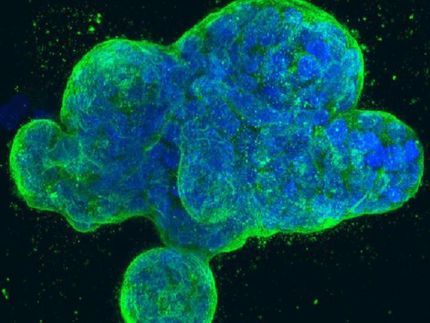Compugen Announces Discovery of Abundant RNA Editing Sites in the Human Transcriptome
Findings published in Nature Biotechnology
Advertisement
Tel Aviv, Israel: Compugen Ltd. announced the systematic identification of adenosine to inosine (A to I) RNA editing sites in the human transcriptome, increasing the number of known A to I editing sites from approximately 100 to more than 10,000. The discovery is being published in Nature biotechnology.
RNA editing is a type of RNA modification in which small nucleotide changes occur after DNA has been transcribed into RNA. Although it is known that RNA editing is an essential factor for mammalian development and recent evidence has suggested that it may be a fairly common phenomenon, prior to today's announcement very few RNA editing sites had been discovered, and it was generally believed to be impossible to systematically discover such sites with current experimental and computational procedures and tools.
In A to I RNA editing there is a site-specific conversion of adenosine to inosine. The deficiency or misregulation in this type of editing has been associated with a number of neurological diseases such as amyotrophic lateral sclerosis (ALS or ?Lou Gehrig's disease?), malignant gliomas, epilepsy, and depression. While many of the effects of RNA editing are still unknown, it is believed that it could significantly affect gene expression and regulation, and may provide a mechanism for controlling RNAi.
The results being announced today involve the discovery by Compugen's scientists of 12,723 A to I editing sites in 1637 genes. Examples of predicted editing sites in selected genes were experimentally validated by Compugen and in collaboration with Dr. Michael Jantsch's laboratories in the Department of Cell Biology and Genetics, University of Vienna, Austria. The research was done in cooperation with Professor Gidi Rechavi, Head of the Cancer Research Center of Sheba Medical Center, Tel Aviv University, Israel.
?Today's announcement is further evidence of the uniqueness of Compugen's predictive approach and the value of incorporating ideas and methods from advanced mathematics, computer science and physics into life science,? stated Mor Amitai, Ph.D., Compugen's President and Chief Executive Officer. ?Compugen's pioneering research has already led to better understandings of important biological phenomena such as alternative splicing - the expression of multiple transcripts from individual genes; naturally occurring sense/antisense pairs - the expression from both strands of DNA at the same location on the genome; and now, RNA editing, which is known to be an important natural mechanism for modifying transcripts after expression. These deeper understandings provide Compugen with the opportunity to make novel putative therapeutic and diagnostic discoveries, and form the basis for the continued improvement of our predictive models and iterative research efforts, thereby increasing the probability of future discoveries through these efforts,? Dr. Amitai concluded.
The results being announced today regarding Compugen's ability to systematically quantify the abundance of A to I RNA editing sites and identify their specific locations in the human genome relied heavily on the use of the Company's proprietary LEADS computational biology platform. The LEADS platform uses advanced proprietary algorithms to create a predictive view of the complete transcriptome of complex organisms. LEADS models important biological phenomena and experimental artifacts, such as alternative splicing, antisense genes, SNPs, chimeric sequences, cross-homology, and multiple polyadenylation. Modeling of these phenomena and accounting for artifacts in the data provide a detailed and accurate representation of gene structures. LEADS has been demonstrated to accelerate the identification and prioritization of drug targets and biological products in Compugen's internal drug discovery efforts and for the Company's biopharma clients.






















































